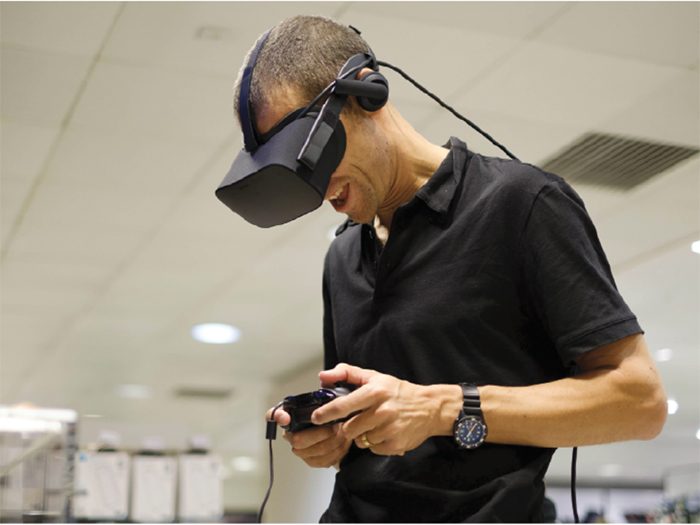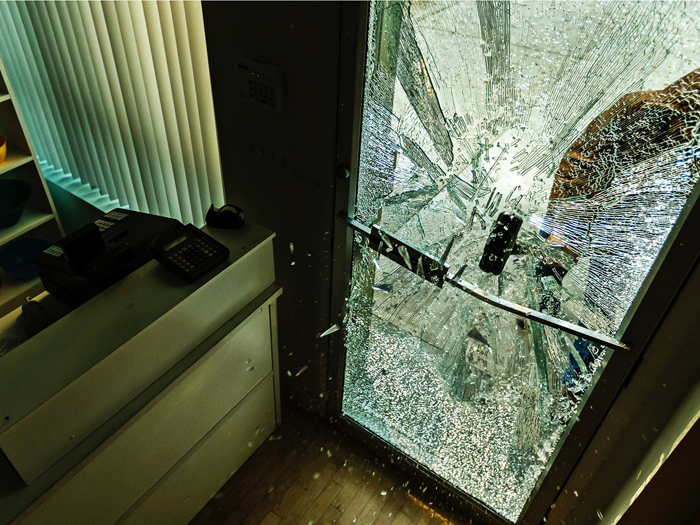Disability
VR in Workers’ Comp

Virtual reality is fast becoming a useful new workers’ compensation tool.
Health care researchers are testing novel ways to incorporate VR into patient rehabilitation while workers’ comp insurers are using it to better train adjusters and underwriters.
Areas where the application has promise include catastrophic injuries such as spinal cord injuries, phantom limb pain after amputation, severe pain after burns and rehabilitation.
“The industry is starting to use it,” said Zack Craft, vice president, rehab solutions, at One Call Care Management. “It’s being discussed at almost every rehab center out there.

Zack Craft, vice president, rehab solutions, One Call Care Management
“They see workers’ comp as a good area to test the waters; they see this as a funded source,” he said.
So how does a video image displayed on a large screen or headset help treat catastrophic injuries?
VR may help injured employees cope with pain and regain mobility after serious accidents. VR therapy may improve balance and help with motor learning and mobility. Incorporating video games with the therapy might also keep patients engaged and interested in rehabilitation for longer.
Treatment can be individually designed per patient based on the injury. Biometrics can measure and adjust to how quickly patients are recovering. The development of the technology, though, is still nascent.
“I think we’re still years away from decent guidelines on which technology to use on certain conditions and for how long and what outcomes we can expect,” said Dr. Robert Goldberg, chief medical officer at Healthesystems.
Doctors tried VR in a study to determine if the technology can help in pain relief while changing bandages on significant burns. Results from the first group of patients were promising.
One of the most exciting potential areas for workers’ compensation payers is the way VR might also be used to replace or reduce opioids in the treatment of pain.
Opioids are a huge cost for payers. That’s because the drugs are so widely prescribed, are addictive and prescription coverage for them can continue for years without remedy.
It is thought VR can help divert the injured worker’s thoughts away from lingering pain and reduce use of addictive painkillers.
“We’re on the cusp of something almost revolutionary if they can manage chronic pain,” Craft said.
“We need to show that the technology works in a way that makes financial sense.” — Zack Craft, vice president, rehab solutions, One Call Care Management
“When your brain is distracted and immersed into a full-body sensory experience it doesn’t focus on pain,” he added.
VR might also offer improved mirroring, a technique already used to help with phantom limb pain. Again, the VR display distracts the patient from focusing on the nerve-ending pain. That may help to rewire the brain to sense less pain and begin to recognize the missing limb.
Currently, VR is most commonly applied to the care of mental health conditions such as depression, post-traumatic stress disorder, autism and ADHD.
Far from the doctor’s office, VR is already playing a big role in workers’ comp as a training tool for employees, underwriters and adjusters, said Mahendra Nambiar, vice president of global insurance solutions and innovations lead at Capgemini.
“The No. 1 way we see VR used in workers’ comp is from the training space,” Nambiar said.
VR can be used to better train workers, such as a forklift operator, how to do a job more safely and avoid injuries, he said. It can also help the adjuster or underwriter learn to do a more consistent job when conducting a workers’ comp safety assessment.
“The uniformity and quality and inspection goes way higher” when VR is used for training, Nambiar said. VR training is often easier and cheaper than instructor-led teaching, he added.
There’s Promise to the Technology
Healthesystems’ Goldberg said he is hopeful about new uses for treating injured employees.

Dr. Robert Goldberg, chief medical officer, Healthesystems
“There’s promise to this technology,” he said.
Yet, there’s reason for concern.
Last year, the Federal Trade Commission fined the creators of the Lumosity “brain training” programs $2 million for deceiving consumers with marketing claims that their games can help users perform better at work and school, and reduce or delay cognitive impairment associated with age.
“Lumosity preyed on consumers’ fears about age-related cognitive decline, suggesting their games could stave off memory loss, dementia, and even Alzheimer’s disease,” said Jessica Rich, director of the FTC’s Bureau of Consumer Protection in a statement.
“But Lumosity simply did not have the science to back up its ads.”
Virtual reality can best be used as medical treatment when evidence-based care is already established, said Skip Rizzo, the director of medical virtual reality at the Institute for Creative Technologies at the University of Southern California, in Playa Vista, Calif.
For example, mirroring is already proven to help patients with phantom limb pain by using a real mirror. VR is simply a new tool to improve on the proven technique.
One Call is looking at ways to measure different outcomes when using VR, such as quality of life improvements, cost and clinical outcomes. The company is also developing ways to track and develop its own VR data.
“We need to show that the technology works in a way that makes financial sense,” Craft said.
The Cost of the Technology and the Treatment
According to a “2016 Goldman Sachs Global Investment Research Report,” the virtual reality and augmented reality market could reach $80 billion in revenue by 2025. Its use in health care alone could generate $5.1 billion in sales.
“Looking beyond video games, we see real estate, retail and healthcare among the first markets that VR/AR disrupts,” Goldman Sachs said in the report.
“I think you’ll see it impacting claims this year,” Craft said. “Over the next one to two years I can’t even image where we’ll be with it.”
Goldberg expects workers’ comp payers will probably decide each case individually.
“I don’t think they are going to hold back on new technology scripts,” Craft said. Some insurers are going to be very willing to approve scripts on VR rather than opioids, he said.
The challenge pertains more to the cost of VR’s technology than its medical value. Carriers will need to understand how to vet VR products, and recurring costs.
The technology may become obsolete more quickly than expected and there are other data costs that may make it difficult for adjusters and case managers to gauge the projected cost of the equipment for each claim.
The good news is that the cost of the VR technology is falling.
“It’s exciting because every day there’s new technology,” Craft said. “It’s no longer in the future; it’s here.” &










